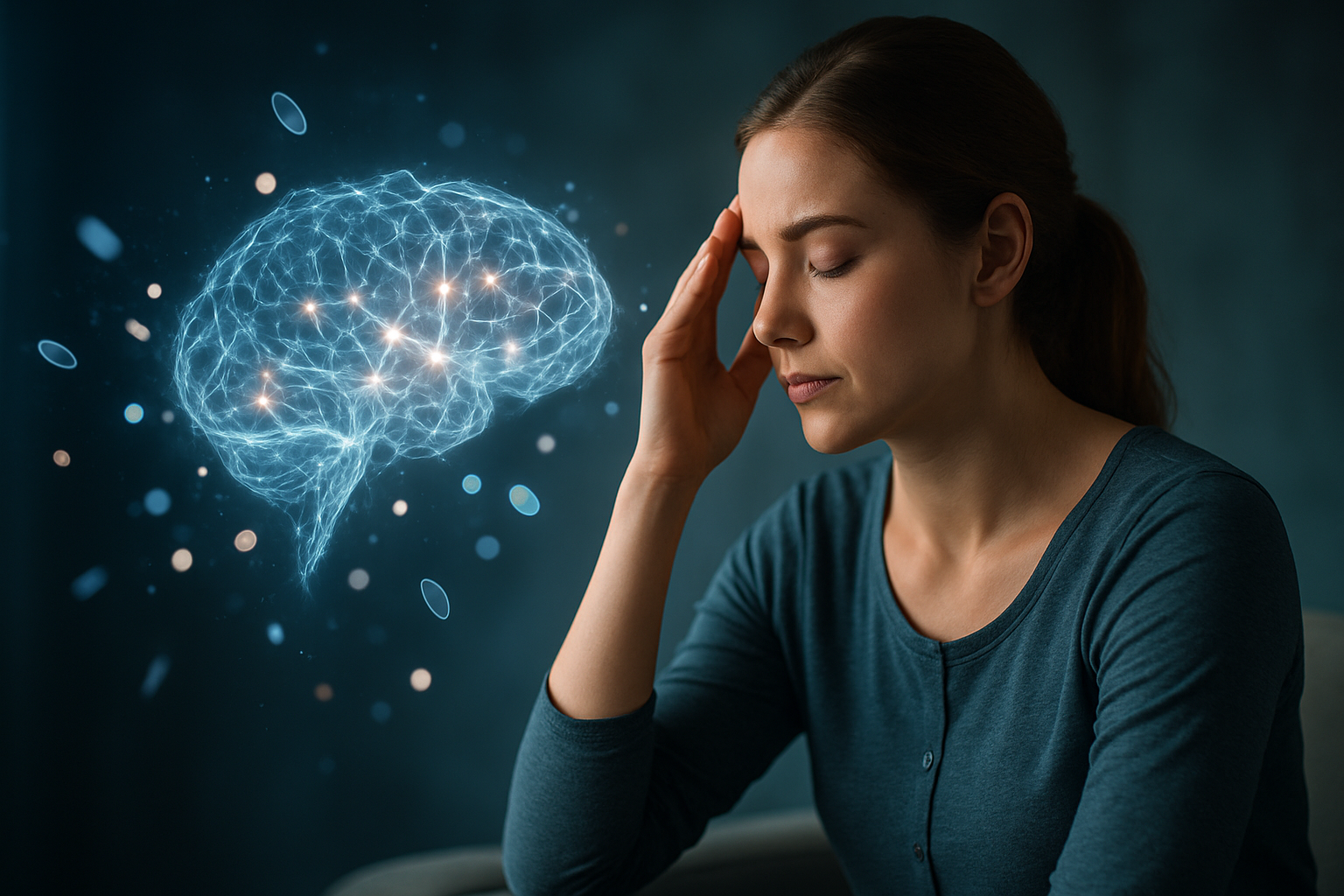Navigating the Maze: Understanding and Managing Anxiety
Anxiety, a pervasive and often misunderstood mental health condition, affects millions of people worldwide. This complex disorder manifests in various forms, from generalized anxiety to specific phobias, and can significantly impact an individual's quality of life. Despite its prevalence, anxiety remains shrouded in misconceptions and stigma. This article delves into the multifaceted nature of anxiety, exploring its roots, manifestations, and the latest approaches to management and treatment. By examining both traditional and innovative strategies, we aim to shed light on this common yet challenging condition, offering hope and practical insights for those grappling with anxiety in their daily lives.

The brain’s amygdala, responsible for processing emotions and triggering fear responses, plays a central role in anxiety. Research has shown that individuals with anxiety disorders often have an overactive amygdala, leading to heightened threat perception even in safe situations. This understanding has paved the way for targeted interventions aimed at regulating amygdala activity and improving emotional processing.
The Spectrum of Anxiety Disorders
Anxiety manifests in various forms, each with distinct characteristics and challenges. Generalized Anxiety Disorder (GAD) involves persistent and excessive worry about various aspects of life. Social Anxiety Disorder focuses on fear of social situations and judgment by others. Panic Disorder is characterized by sudden, intense episodes of fear accompanied by physical symptoms like rapid heartbeat and shortness of breath.
Other forms include specific phobias, obsessive-compulsive disorder (OCD), and post-traumatic stress disorder (PTSD). Each type of anxiety disorder requires a nuanced approach to diagnosis and treatment, highlighting the importance of professional assessment and personalized care plans.
The Impact of Modern Life on Anxiety Levels
The 21st century has brought unique challenges that contribute to rising anxiety levels. The constant connectivity facilitated by technology, while beneficial in many ways, has also led to information overload and difficulty in disconnecting from work and social pressures. Social media, in particular, has been linked to increased anxiety, especially among younger generations, due to constant comparison and fear of missing out (FOMO).
Economic uncertainties, global crises, and rapid societal changes further contribute to a sense of instability and worry. The COVID-19 pandemic has exacerbated these issues, leading to a significant spike in anxiety rates worldwide. Understanding these modern factors is crucial in developing effective strategies to combat anxiety in contemporary society.
The Mind-Body Connection in Anxiety
Anxiety is not just a mental state; it has profound physical manifestations. Chronic anxiety can lead to a range of health issues, including cardiovascular problems, digestive disorders, and weakened immune function. Conversely, physical health problems can exacerbate anxiety, creating a challenging cycle.
Recent research has focused on the gut-brain axis, revealing a strong connection between gut health and mental well-being. The microbiome, the collection of microorganisms in our digestive system, plays a crucial role in producing neurotransmitters that affect mood and anxiety levels. This discovery has opened up new avenues for treatment, including dietary interventions and probiotics as potential aids in managing anxiety.
Innovative Approaches to Anxiety Management
While traditional therapies like cognitive-behavioral therapy (CBT) and medication remain cornerstone treatments for anxiety, innovative approaches are emerging. Mindfulness-based interventions, including meditation and yoga, have shown promising results in reducing anxiety symptoms. These practices help individuals develop greater awareness of their thoughts and emotions, fostering a sense of control and calm.
Virtual reality (VR) therapy is gaining traction as a tool for exposure therapy, particularly for specific phobias and social anxiety. By creating controlled, immersive environments, VR allows individuals to confront their fears gradually and safely. Neurofeedback, a technique that helps individuals learn to regulate their brain activity, is another frontier in anxiety treatment, showing potential in managing symptoms without medication.
The Role of Lifestyle in Anxiety Prevention
Prevention is increasingly recognized as a crucial aspect of mental health care. Lifestyle factors play a significant role in managing and preventing anxiety. Regular exercise has been shown to be as effective as medication for some individuals with anxiety disorders. The endorphins released during physical activity act as natural mood elevators, while the focus required in exercise can provide a mental break from worry.
Sleep hygiene is another critical factor. Poor sleep quality and anxiety form a vicious cycle, each exacerbating the other. Establishing consistent sleep patterns and creating a restful environment can significantly improve anxiety symptoms. Nutrition also plays a role, with research suggesting that a balanced diet rich in omega-3 fatty acids, complex carbohydrates, and antioxidants can support mental health.
Breaking the Stigma: Anxiety in Society
Despite increased awareness, stigma surrounding anxiety disorders persists. This stigma can prevent individuals from seeking help and lead to feelings of isolation and shame. Education and open dialogue are key to breaking down these barriers. Workplace initiatives that prioritize mental health, public awareness campaigns, and media representations that accurately portray anxiety disorders all contribute to a more understanding and supportive society.
Celebrities and public figures sharing their experiences with anxiety have helped normalize conversations about mental health. This openness encourages others to seek help and fosters a more compassionate view of anxiety disorders.
The Future of Anxiety Research and Treatment
The field of anxiety research is rapidly evolving, with promising developments on the horizon. Genetic studies are uncovering the hereditary components of anxiety disorders, potentially leading to more targeted treatments. Advances in neuroimaging are providing deeper insights into the brain mechanisms underlying anxiety, paving the way for new interventions.
Personalized medicine approaches, tailoring treatments based on an individual’s genetic makeup and specific symptoms, hold great promise. Additionally, the integration of technology in mental health care, such as AI-powered therapy apps and wearable devices that track stress levels, is expanding access to support and monitoring tools.
As our understanding of anxiety deepens and treatment options expand, there is hope for more effective management of this pervasive condition. By combining scientific advancements with increased societal awareness and support, we can work towards a future where anxiety no longer holds individuals back from living fulfilling lives.





